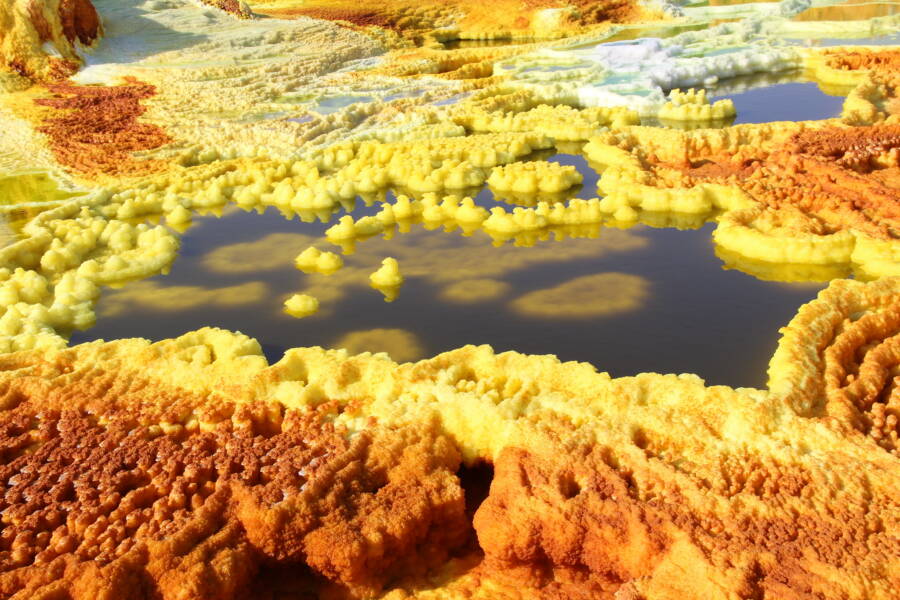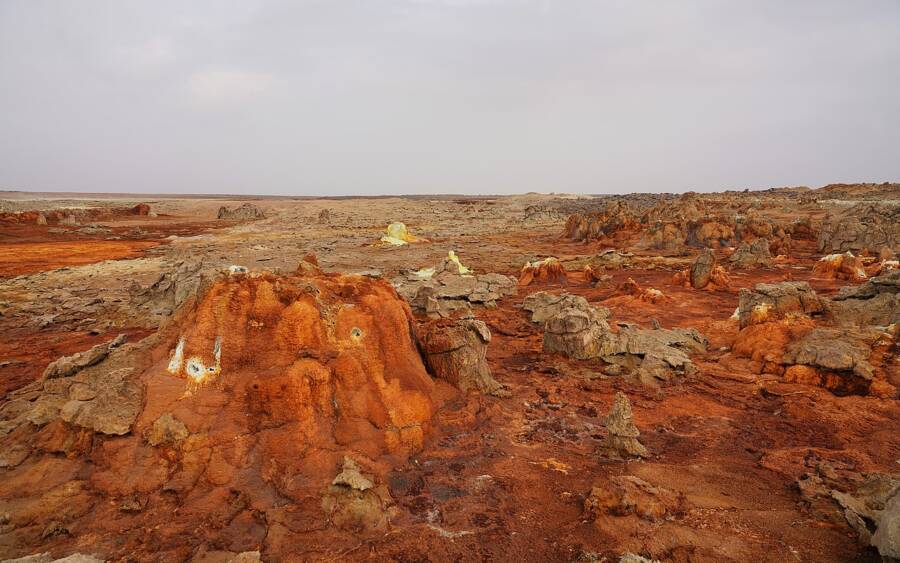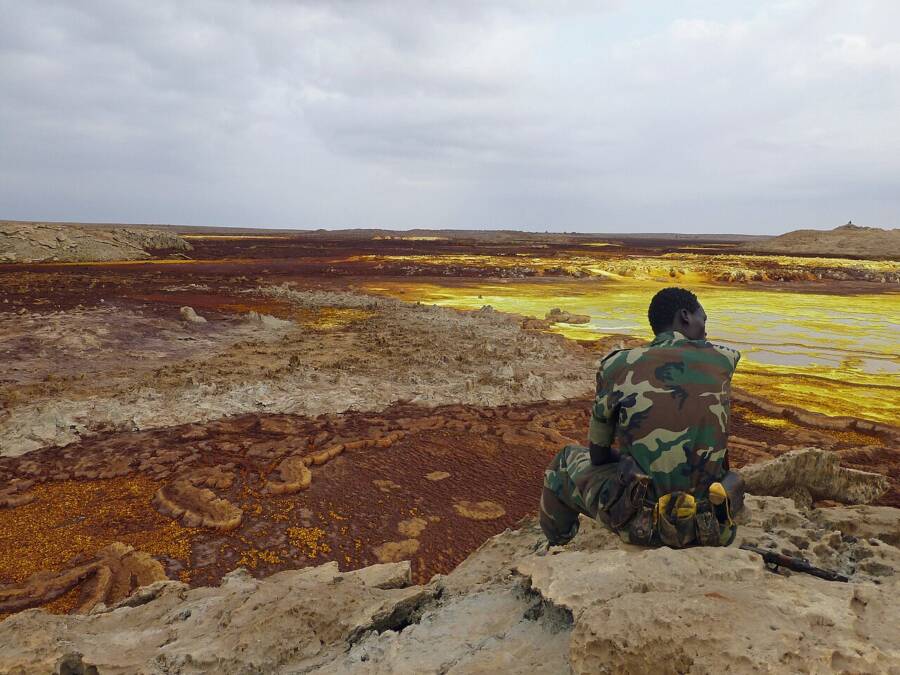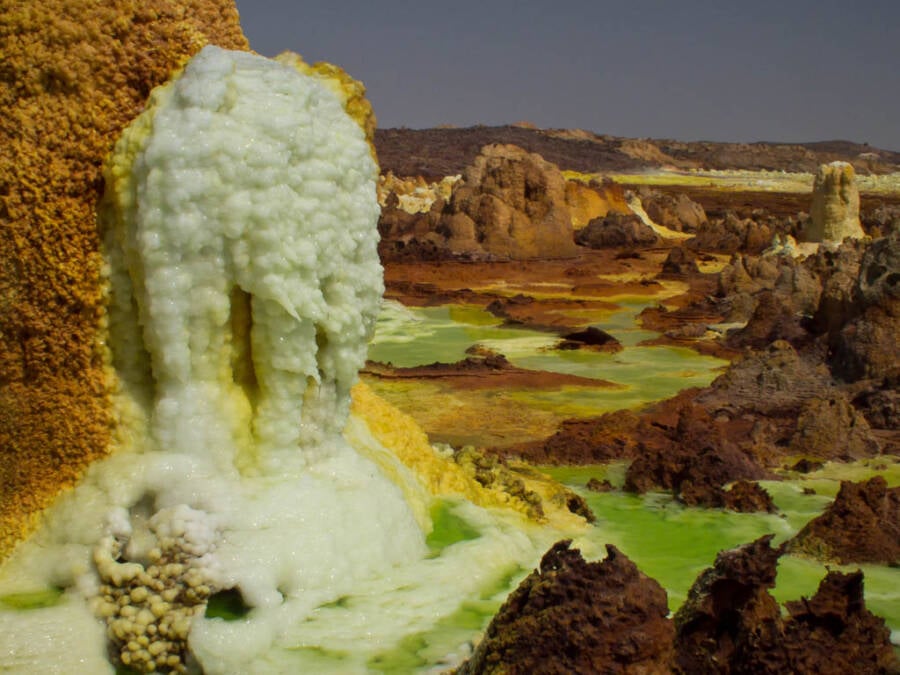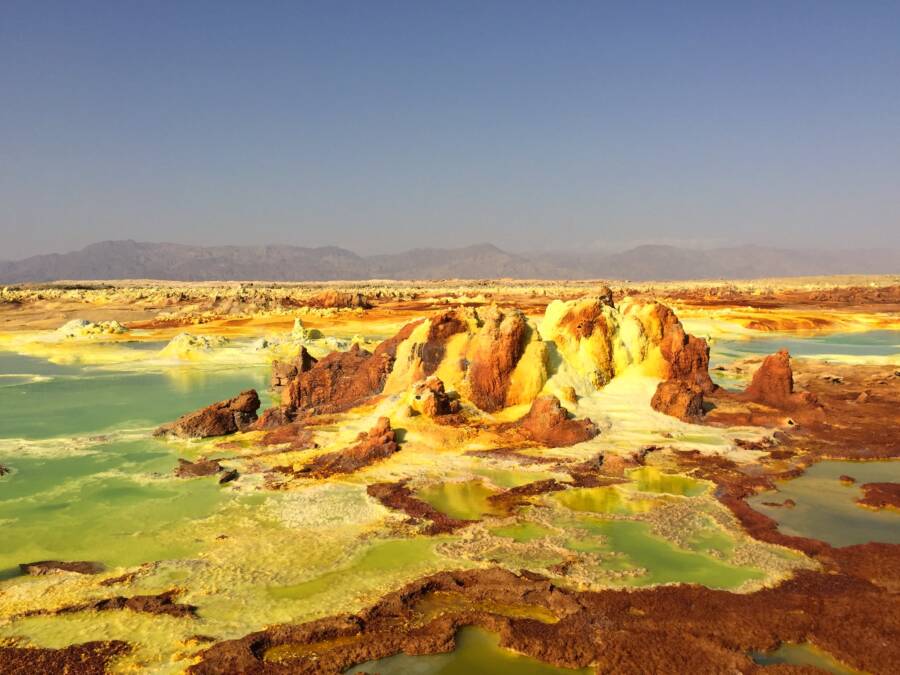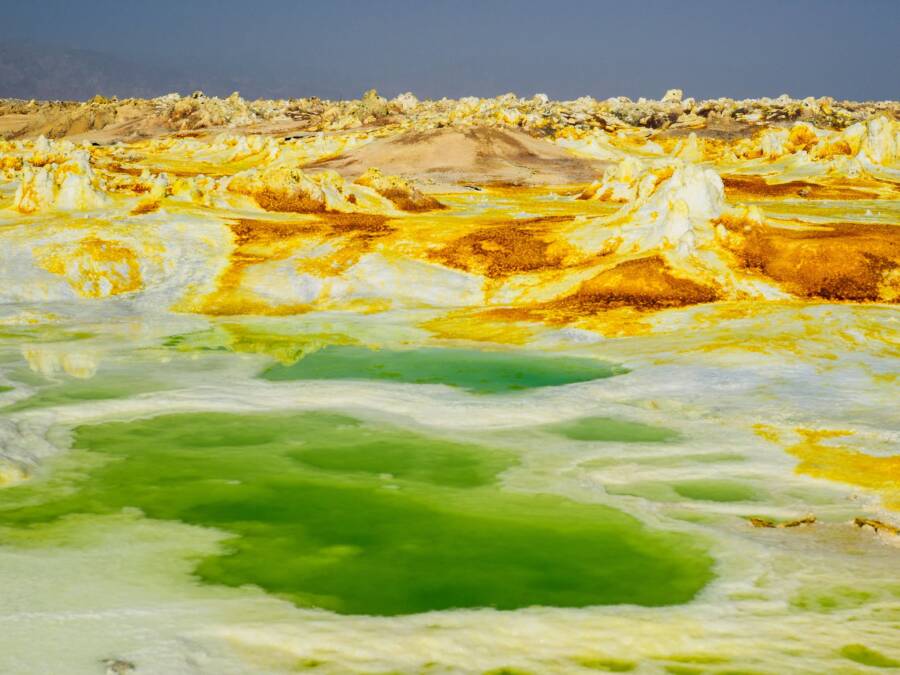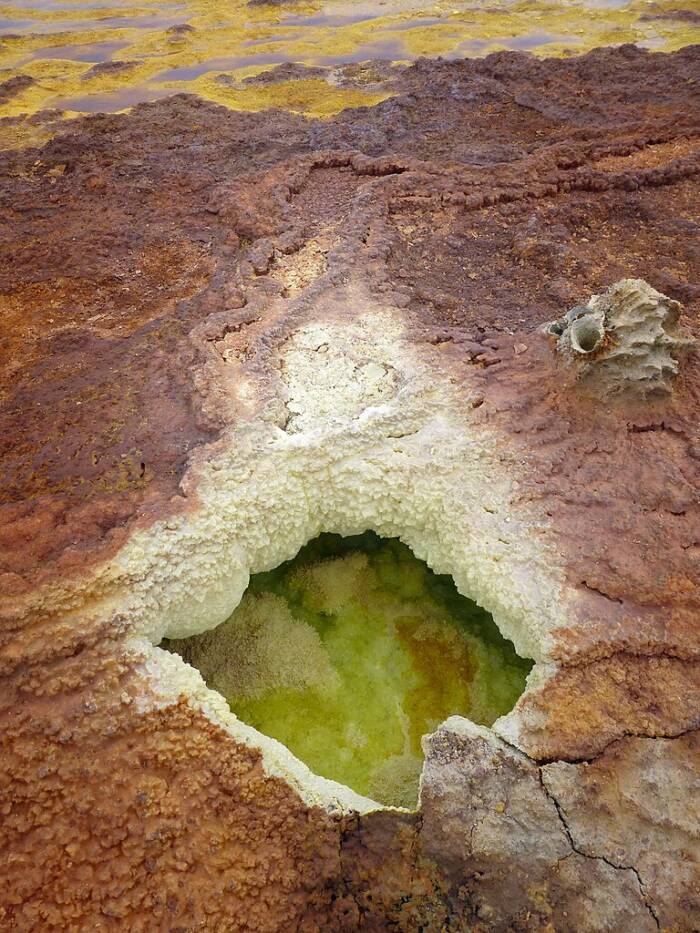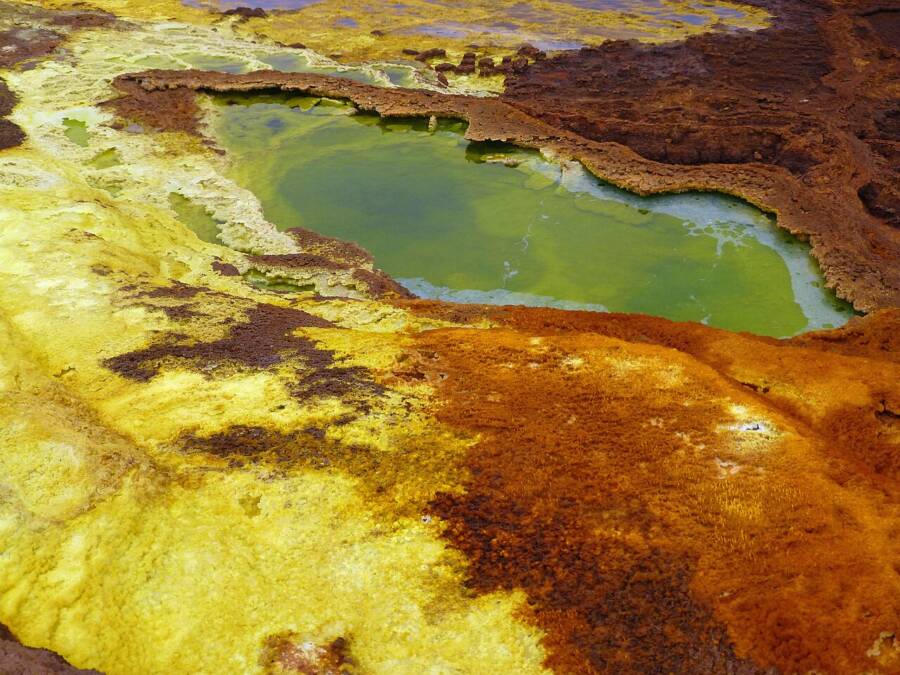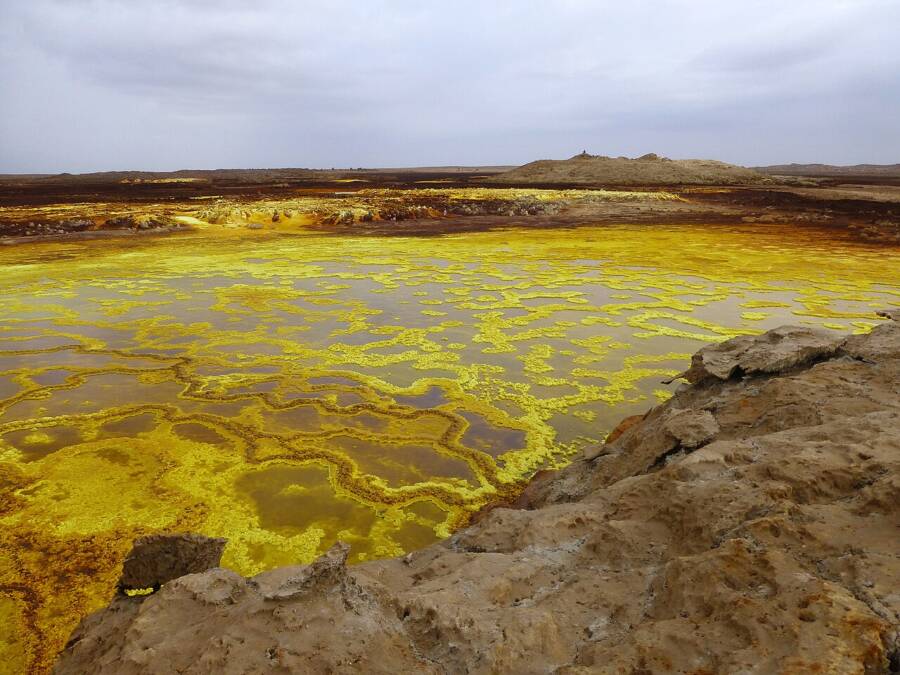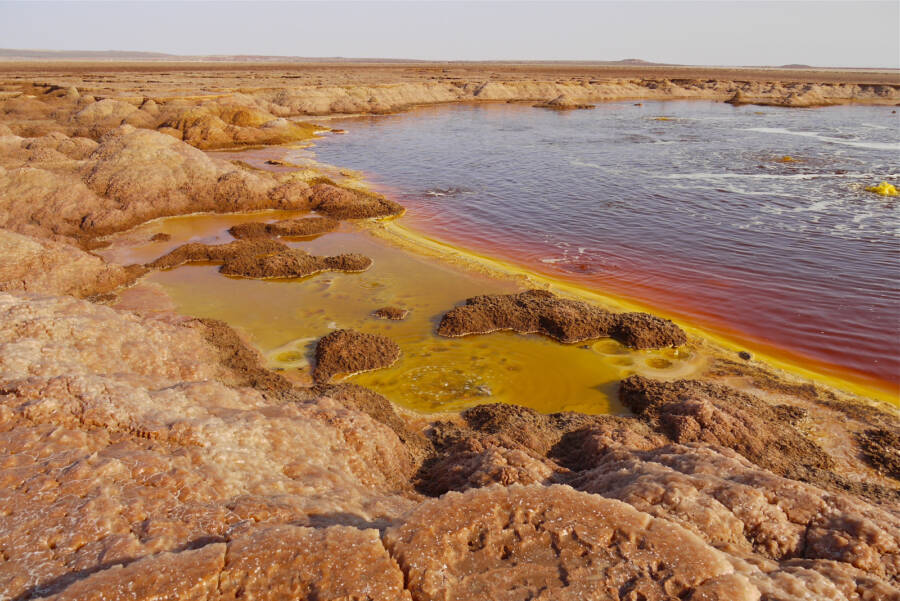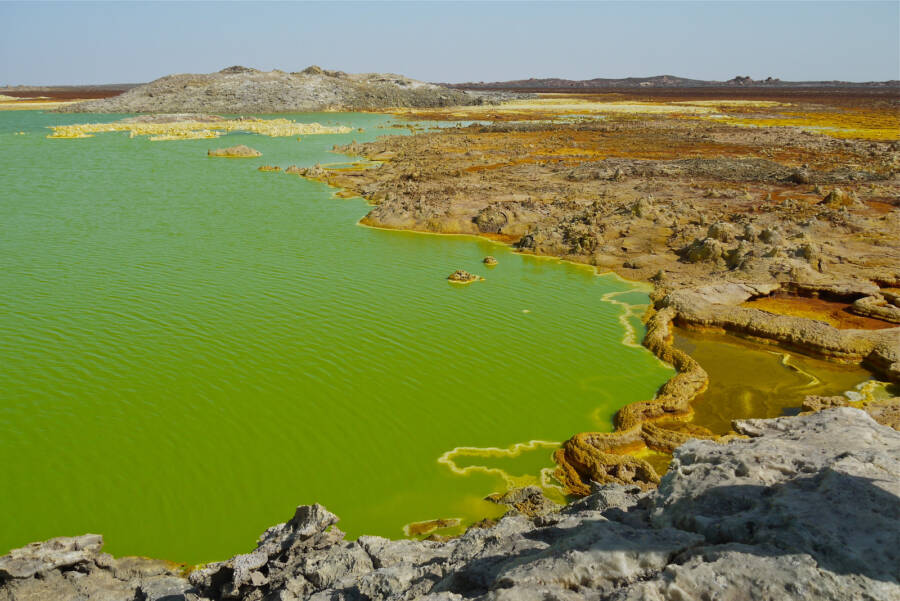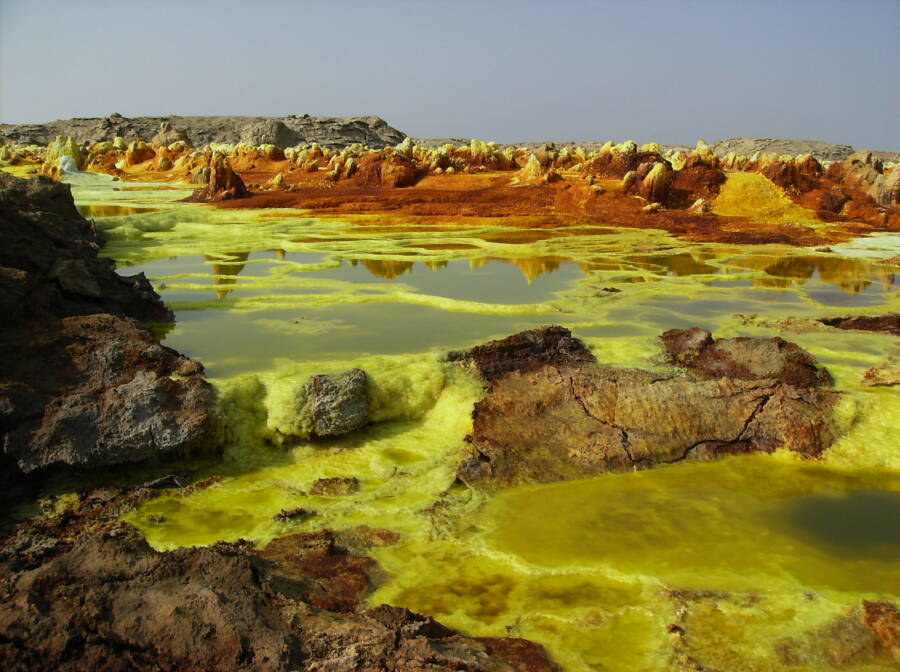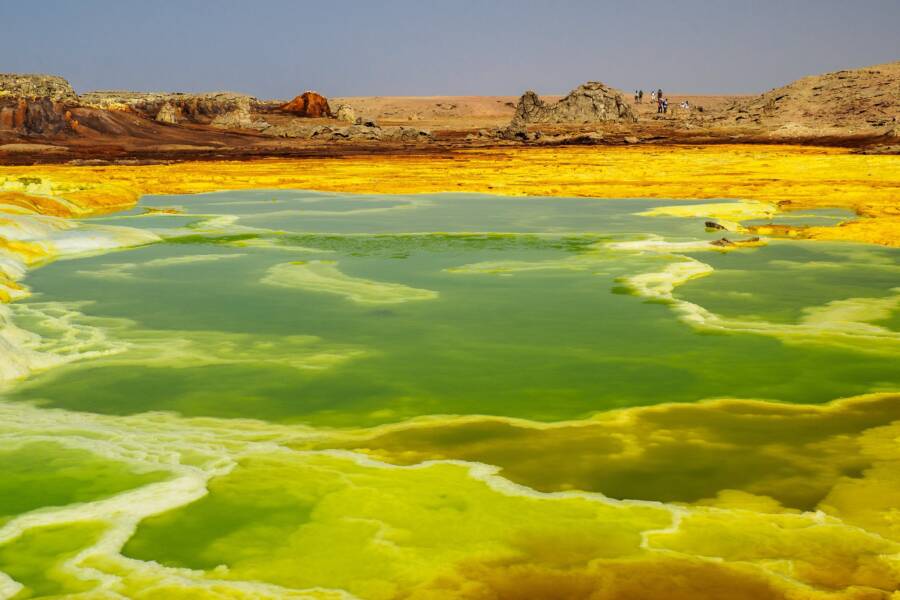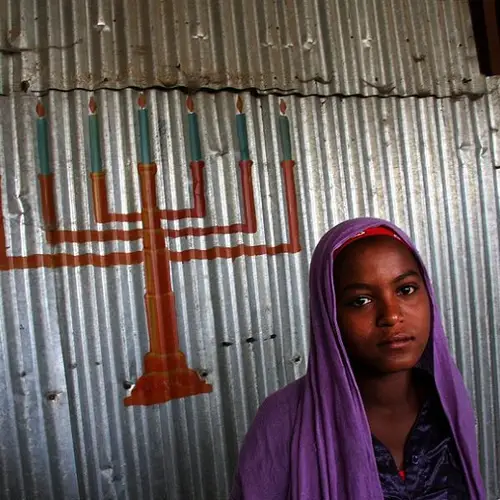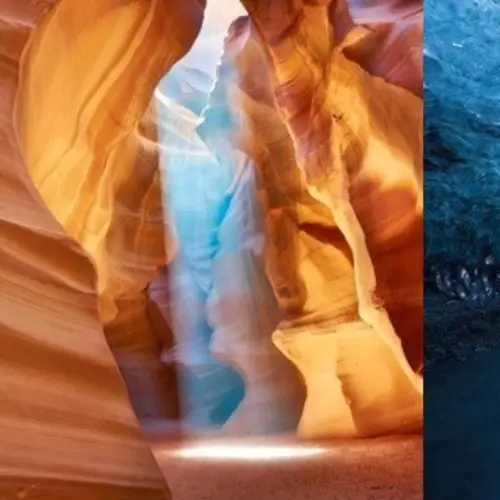Welcome to Dallol, Ethiopia, where volcanoes, geysers and fractured earth form the landscape of the hottest place in the world.
There’s a corner of the Ethiopian desert that feels like another planet. Not only is Dallol, located within the Danakil Depression, one of the hottest places on earth, but it’s also filled with vibrant greens, yellows, and reds caused by the area’s sulfur springs.
The history of this sizzlingly picturesque region is fascinating. And information gleaned from Dallol may also help humankind explore other planets in the future.
Look through photos of Dallol in the gallery below, and read on to learn more about one of the hottest places on the planet.
Dallol, One Of The Hottest Places In The World
The psychedelically-colored sulfur springs of Dallol are located in the Danakil Depression, a geographic depression in Ethiopia's Afar Triangle. It's considered one of the hottest places in the world (with an average daily temperature of 93.9 degrees Fahrenheit as well as one of the lowest (the depression is over 400 feet below sea level).
Temperatures in the area can rise up to 120 or even 130 degrees Fahrenheit, which makes it a deeply inhospitable — if visually striking — region.
The depression itself was once part of the Red Sea. It formed slowly over time as volcanic eruptions cut off a section of the water, which then evaporated in the arid climate. Today, the Danakil Depression covers an impressive swath of land, 124 miles by 31 miles, in the north of Ethiopia.


A.Savin/Wikimedia CommonsThe vibrantly colored hot springs of the Danakil Depression.
The boiling hot springs and sulfur fields of Dallol, located within the Danakil Depression, is one of the area's main draws. This may prompt the question: why would anyone want to travel to one of the hottest places on Earth?
Though Dallol is certainly hot, it's long drawn travelers curious to see its startling array of colors. Here, visitors can enjoy a landscape that pops in bright greens, sultry reds, and lemony yellows. The New York Times reported in 2017 that these colors are formed by the region's unique geology. Magna from nearby volcanoes heats the groundwater, which bubbles to the surface and dissolves salt and other minerals as it boils in hot springs. The crust that remains takes on the vibrant colors of minerals, iron, and salty algae, creating a landscape that looks like something out of science fiction.
And though conditions in Dallol are difficult to endure, it's long drawn local people seeking to harvest its abundance of salt, or "white gold."
Life In The Danakil Depression
Though it's been called the "gateway to hell" and the "land of death," the Danakil Depression has been home to the Afar people for centuries. A nomadic people who move around the region with herds of cattle, goats, and camels, the Afar have long harvested salt from the depression to sell. In fact, CNBC reported in 2020 that salt, or "white gold," was used as a form of currency in Ethiopia up until the 20th century.
Miners often have to travel for hours or even days to reach the salt fields. Once there, they mine the salt by hand and load slabs of it onto camels. USA Today wrote in 2014 that these slabs are cut into 6.5 pound blocks, then balanced onto a camel's back. The camels are then led in groups of 10 to 15 by two Afar herders, who guide them during their long walk out of the desert.
Despite the considerable obstacles that exist in mining salt, the region has also drawn interest from outsiders. In the 20th century, European, Indian, and American investors all tried to establish a foothold in the region to profit from its landscape. However, most of these mines have been abandoned.


ILRI/Fiona Flintan/FlickrCamels transporting salt in the Danakil Depression. Salt has long been considered "white gold" in the region, and was even used as a form of currency in Ethiopia up until the 20th century.
That said, the Danakil Depression and Dallol itself continue to draw curious travelers from across the world. Though it can be dangerous — there are border skirmishes between Ethiopia and Eritrea, and European tourists were kidnapped and killed in 2012 — people continue to flock to the region to gaze upon the incredible colors of Dallol. CNBC reports that people usually depart from the nearby town of Wikro around 4 a.m., and drive three hours to reach the stunning sights of the Danakil Depression.
"The Danakil Depression really is one of the most incredible natural wonders in the world. It is one of the most alien places on earth, and with Ethiopia growing in popularity as a destination, we are seeing more and more travelers," Henok Tsegaye, a local tour guide, told CNBC.
And it's not only tourists who want to see Dallol and the Danakil Depression. The region has also drawn scientists in recent years, who are hoping to apply lessons from the inhospitable region to better understanding how life functions on other planets.
From Dallol To Mars: What The Region Can Teach Us About Different Kinds Of Life
In 2016, The New York Times reports that researchers from the Spain's Centro de Astrobiología in Madrid, Italy's University of Bologna and the International Research School of Planetary Sciences, and Ethiopia's University of Mekelle descended on Dallol to study extremophiles, microbes that are able to live in extreme conditions.
They are able to survive in areas where humans could not, like hot springs, salty lakes, and polar ice caps. Scientists are hoping to learn more about them, because their existence suggests that life can be possible
on other planets. Specifically, planets like Mars.
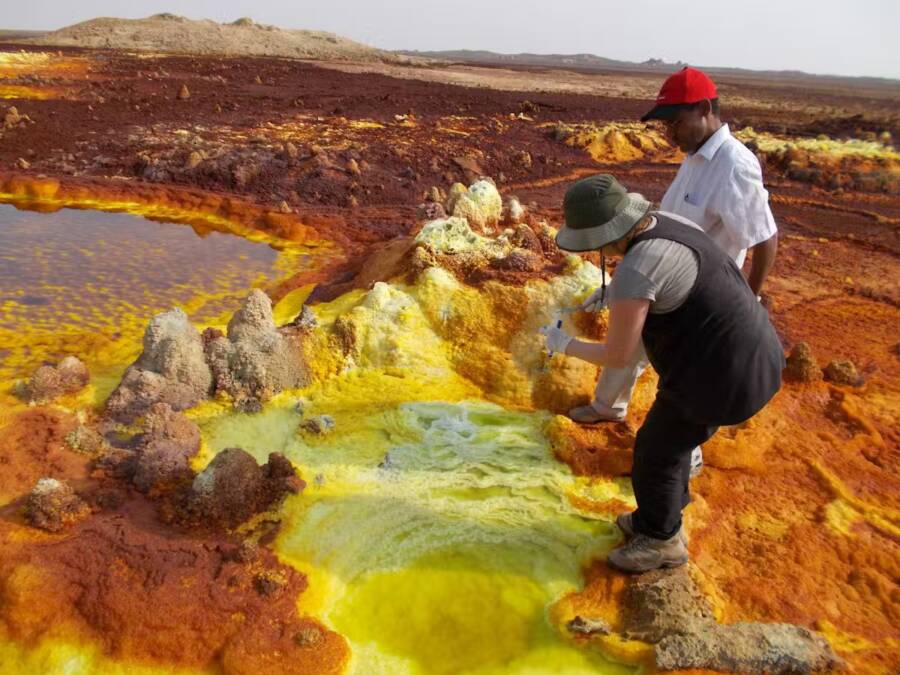

Barbara CavalazziScientists collecting samples from Dallol in hopes of learning more about extremophiles.
Felipe Gómez Gómez, who led the expedition to better understand the Danakil Depression's extremophiles, told The New York Times that the goal was "to try to know the limits of life and the possibility of such forms of life in other planets like Mars."
Studying these unusual forms of life, he further explained is "a way to train ourselves to identify different forms of life for astrobiological exploration."
Another later of researchers, however, had bad news for anyone hoping to find life on Mars. Their study of Dallol in 2019 suggested that life could not survive under area's most extreme conditions, namely its hot, salty, and acidic hypothermal pools. In these places, Live Science reported in 2019 that researchers found no DNA "and thus no trace of a living organism."
That said, another research team who examined the pools around the same time believe that they did find traces of life. But their findings may be "weak" because of contamination from nearby salt plains.
All said, it seems that Dallol will continue to draw both scientists and travelers, each of whom hope to experience the region's unique and stunning characteristics. If you're not quite ready to book your trip to Ethiopia, enjoy the gallery of colorful photos from Dallol instead.
Some day, pictures will be all that's left of the region. In millions of years, scientists suspect that it will get swallowed once more by the sea.
Want to learn about more extreme places after looking at Dallol, the hottest place on Earth? Check out our posts on the world's driest city and the world's coldest city. Then, check out six of the most remote places on Earth.
